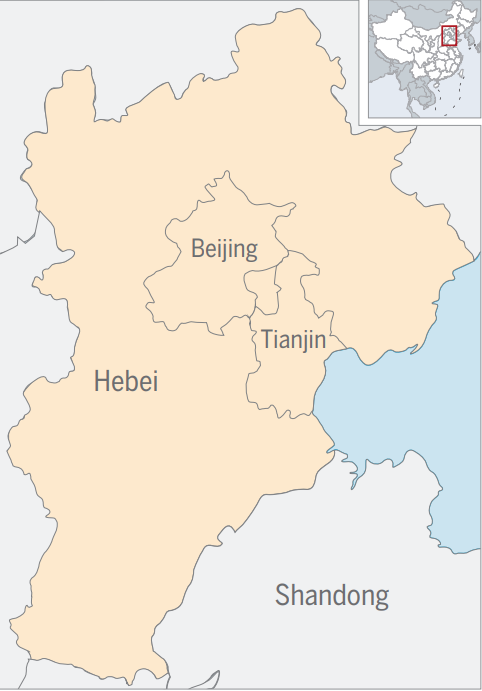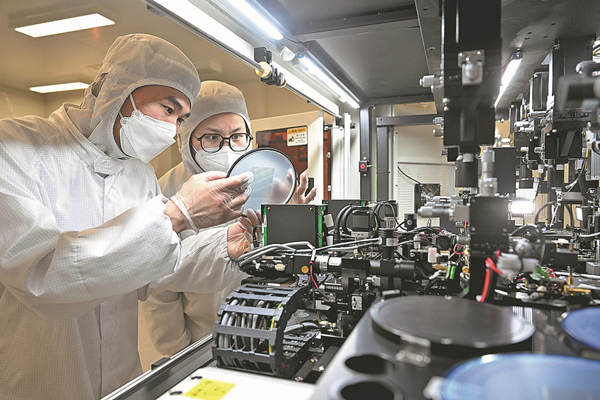
Over 10 years ago, daring to hang your clothes out to dry was often a fool's errand in the dusty Luquan district in Shijiazhuang, Hebei province, as they'd likely come indoors dirtier than they were before.
In Luquan, the cement industry reigned supreme thanks to the abundance of limestone. The district has been a major player in providing the fuel for China's massive concrete expansions and infrastructure projects over the past decade. As a result, dust often filled the air.
Located at the foothills of the Taihang Mountains on the western side of the North China Plain, a 10-kilometer-long corridor was home to more than 160 cement enterprises at its peak.
The cement corridor became a significant source of pollution for the city, dragging the air quality of Shijiazhuang down to rank it at the bottom of a list of 74 major Chinese cities from 2013 onward.
However, thanks to strict government action and regulation on sources of pollution, blue skies have returned.
"There is no more dusty weather, and the blue sky is back, " said He Weiying, a 45-year-old who used to work in the cement industry.
Last year, the average concentration of fine particulate matter, or PM2.5, in Hebei dropped to 38.6 micrograms per cubic meter, a decrease of 64.3 percent compared to 2013, and days with good air quality increased by 121 compared to 2013, according to data from the provincial government.
All key cities in the province have risen out of the bottom 10 of the national list for air quality.
"At our museum, we tell the visitors how we achieved this through vivid pictures and detailed stories," said He, who is now a curator at a local museum about the area's industrial history.
The joint and comprehensive campaign against air pollution launched in the Beijing-Tianjin-Hebei region in the past decade has managed to bring about large-scale changes through a series of bold industrial restructuring and upgrading initiatives.
A total of 237 cement and building materials enterprises have been closed, slashing 80 percent of the cement production capacity in Luquan, and the remaining two cement enterprises have undergone continuous upgrades and transformations, said Cui Zhenhong, from the district's bureau of science, industry and information technology.

Workers test chips at an electronics factory in Luquan district of Shijiazhuang, Hebei province, last month. CHINA DAILY
Hebei Jinyu Dingxin Cement is one of the two remaining cement enterprises in the district.
"Our cement workers are now also environmental workers, and they no longer have to endure a grimy appearance at work, since there has been an improvement in dust reduction," said Liu Keqin, director of the company's energy and environmental protection department.
The company has injected around 1 billion yuan ($138.9 million) in the past 10 years into upgrading technologies and facilities involved in reducing emissions, Liu said, in response to the regional coordinated campaign to cut emissions.
Hebei Jinyu Dingxin Cement even opened a cement museum in 2019 to show how it has developed and transformed over the years.
"Visitors to the museum are often surprised that a cement production base is capable of being clean and beautiful just like an urban park," said Wu Xiangyan, from the company's publicity department.
Around 30,000 students visited the museum last year, she said.
Wu Tao, a Luquan resident and a worker at the cement factory for 21 years has noticed how his surroundings have changed over time.
"I commuted to work on a motorcycle before, passing through stone quarries where dust filled the air. Now, I take a shuttle bus, traveling along the mountain road and watching the hills on the way, which uplifts my mood for work," he said.
The mountain road is a major vertical transportation artery in Luquan, spanning 50 km, with 33 scenic spots and attractions, including a zoo and a mountain forest park that have promoted local tourism since 2018, according to the district government.
With the increased number of tourist attractions and well-connected roads, Luquan has become a hot destination. During the eight-day Spring Festival holiday last month, it had 1.27 million visits, generating nearly 12.69 million yuan in ticket revenue, the district government said.






